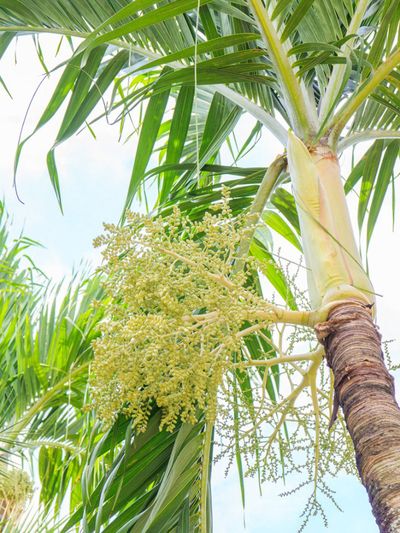What is a Christmas Palm?
The Christmas palm (Adonidia merrillii) forms a lovely smaller tropical tree suitable for home landscapes. What is a Christmas palm? The plant is also known as the Manila palm or dwarf Royal. It is native to the Philippines and useful in United States Department of Agriculture zone 10. The tree only gets 20 to 25 feet (6-8 m.) in height and is self-cleaning. Lucky warm season gardeners should know how to grow Christmas palm tree for diminutive tropical flair but easy maintenance. The Christmas palm gets started growing with a bang, achieving 6 feet (2 m.) in height quite rapidly. Once the tree is established to its site, the growth rate slows down considerably. The smoothly ridged trunk can grow 5 to 6 inches (13-15 cm.) in diameter and the tree’s elegantly bowed crown may spread out to 8 feet (2 m.). Christmas tree palms bear arching pinnate leaves that may approach 5 feet (1-1/2 m.) in length. One of the more interesting Christmas palm tree facts is why it came by its name. The plant bears bright red clusters of fruits that ripen just about the same time as the Advent season. Many gardeners consider the fruit a debris nuisance, but removing them before ripening usually solves any messy issues.
How to Grow a Christmas Palm Tree
Landscapers like to plant these trees quite close together because they have small root balls and will produce a natural looking grove. Be aware that growing Christmas palm trees too close can cause some of them to fail to thrive due to excess competition. Planting in too little light can also produce spindly trunks and sparse fronds. If you want to try growing your own Christmas tree palm, collect seeds in late fall to early winter when they are ripe. Clean off the pulp and immerse the seed in a solution of 10% percent bleach and water. Plant seeds shallowly in flats or small containers and place them in a location with temperatures of 70 to 100 degrees Fahrenheit (21 to 37 C.). Keep the container moist. Germination in Christmas tree palm seeds happens fairly rapidly and you should see sprouts in just a few weeks.
Christmas Palm Tree Care
This tree prefers well-drained, slightly sandy soil in full sun, although it can tolerate light shade. The plants require supplemental water as they establish, but once mature, these trees can withstand short periods of drought. They are also quite tolerant of saline soils. Fertilize every 4 months with a time release palm food. Because the plants are self-cleaning, you rarely have to do any pruning. The palms are susceptible to Lethal Yellowing. This disease will eventually take the palm. There is a preventative inoculation that is administered before the plant contracts the disease. A few fungal diseases are also of concern; but for the most part, Christmas palm tree care is a piece of cake, which is why the plant is so popular in warm climates.
